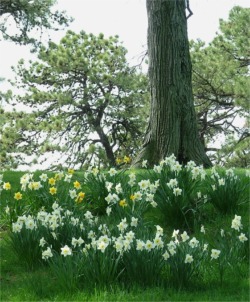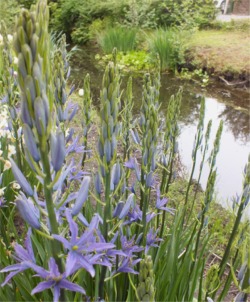 Prepare the garden bed or planting site in a spot with a minimum of six hours of daily sunlight and well-draining, neutral pH soil that is free of disease with the composition of sandy loam. If one has to do any sort of soil composition work, it is best to do so for the entire planting site or bed, never in individual bulb planting holes. You may refer to Soil Good for Flower Bulbs section.
Prepare the garden bed or planting site in a spot with a minimum of six hours of daily sunlight and well-draining, neutral pH soil that is free of disease with the composition of sandy loam. If one has to do any sort of soil composition work, it is best to do so for the entire planting site or bed, never in individual bulb planting holes. You may refer to Soil Good for Flower Bulbs section.
If bulbs are to be planted along a road or driveway, they should be away from any plowed snow accumulation that may include road salt or other de-icing compounds harmful to bulbs.
Flower bulbs hate to get 'wet feet'. They should never be planted in areas with poor, excessive or continuous water drainage, or standing water. Moisture-ridden soil causes a healthy bulb to rot. If planted near a body of water, bulbs must be planted well above the high water mark. If planting along a stone wall, make sure that water drainage is away from them. Flower bulbs planted on hills or slopes often sustain water damage as it drains and settles in pockets (planting holes). If there is a planting site that tends to retain more moisture, you may refer to our section on More Moisture-Tolerant Flower Bulbs .

Do not plant new flower bulbs in previously diseased soil or in areas containing previously planted, diseased bulbs. Healthy flower bulbs can be infected by existing soil-borne diseases that can cause stunted, yellowed foliage, no flowers and eventually rot or mummify the whole bulb.
In the fall, turn over the garden soil, loosening it 3" deeper than the flower bulb planting depth. Remove any rocks that have been brought toward the surface from prior year frost heaves.
For new housing construction, it is a good idea to ask the contractor if he or she could bring in well-draining, neutral pH sandy loam where garden beds are to be planted. This will help to avoid having to remove or amend common construction fill later.




